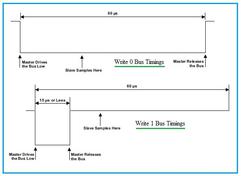1-Wire Interface: Advantages and Disadvantages
Advertisement
This page explores the pros and cons of the 1-Wire interface. We’ll delve into its benefits and drawbacks to help you understand if it’s the right choice for your application.
What is a 1-Wire Interface?
Introduction: The 1-Wire protocol is a communication method that uses a single wire for data exchange between a master device and multiple slave devices.
- Unlike many other communication protocols, 1-Wire doesn’t use a separate clock signal.
- Instead, it relies on an internal clock. It typically uses two wires in total: one for data and one for ground (GND).
- Communication is half-duplex, meaning data can only be transmitted in one direction at a time.
- The protocol uses a 64-bit device addressing scheme, allowing for a large number of uniquely identifiable devices.
- Multiple slaves can be connected in a multi-drop configuration (all connected to the same wire).
- Data rates are relatively low, with 16.3 Kbps in standard mode and 163 Kbps in overdrive mode.
- A key advantage is its low power consumption.

Advantages of the 1-Wire Interface
Here are the key benefits of using a 1-Wire interface:
- Simplified Wiring: Multiple slave devices can be accessed using only two wires (data and ground). This reduces complexity and cost in wiring.
- Cost-Effective: Fewer wires translate to lower material costs, making it a cheaper solution overall.
- Easy Implementation: The interface is relatively straightforward to implement, simplifying the design process.
- Long Distance Support: 1-Wire can support communication over longer distances, up to approximately 300 meters.
Disadvantages of the 1-Wire Interface
Despite its advantages, the 1-Wire interface also has some drawbacks:
- Software Complexity: Implementation requires both hardware and software components. Data synchronization at the receiver needs careful handling in software, which can be complex.
- Distance Limitations: While it supports longer distances than some other protocols, it’s still susceptible to noise and cable capacitance, which can limit the practical usable distance.
- Slow Communication Speed: The data transfer rates are relatively slow compared to other modern communication interfaces.
- Limited Vendor Support: 1-Wire slave devices are primarily manufactured by Dallas Semiconductor (now Maxim Integrated), limiting your vendor choices.
Advertisement
 RF
RF



